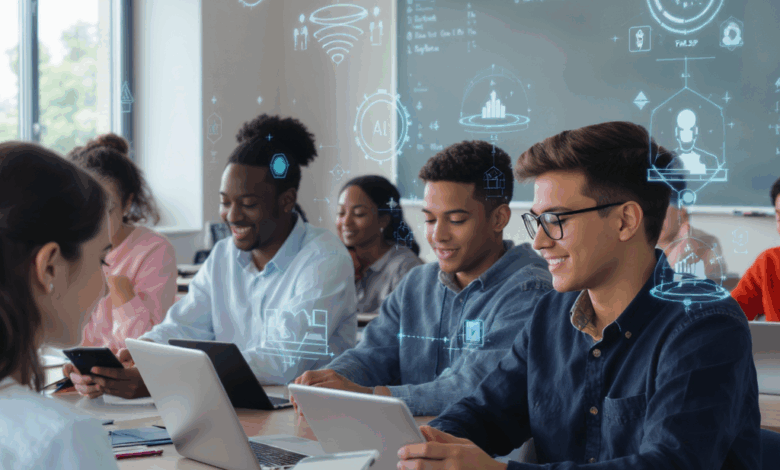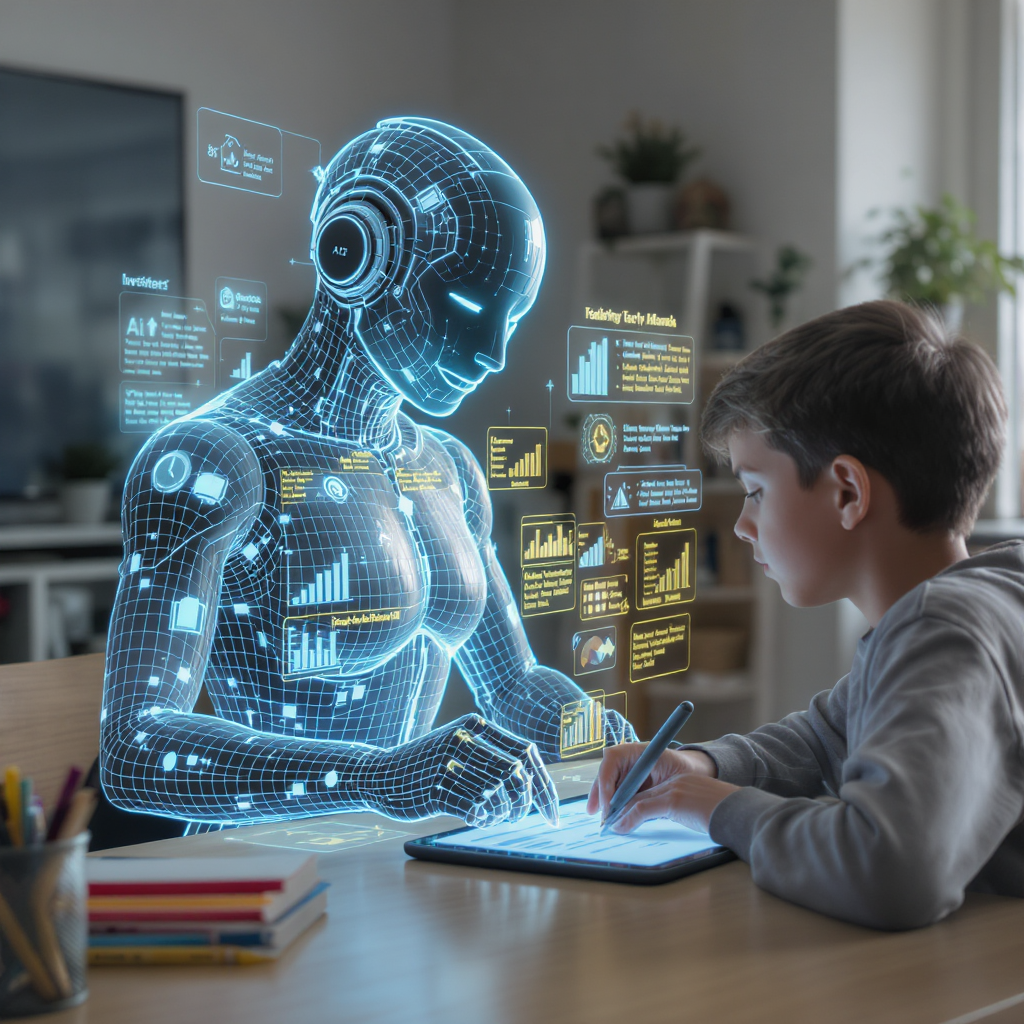When AI Starts Teaching – Are We Ready for Personalized Learning’s Next Frontier?

Have you ever felt like a class was just not made for you? Like the lessons raced ahead or dragged behind your own pace, leaving you either frustrated or bored? I remember sitting through an online course last year, watching the same video over and over because the explanations didn’t quite fit how I thought. That moment stuck with me — could technology really understand and adapt to each learner’s unique rhythm?
Lately, AI has been stepping into the classroom, not as a cold calculator but as an adaptive tutor that listens and responds to individual progress. Platforms now analyze how we engage with material, adjusting the difficulty or offering different explanations — almost like having a personal coach who knows when you’re grasping a concept or when you need more time. It’s fascinating to think that algorithms might soon understand our learning struggles better than a one-size-fits-all syllabus ever could.
But this shift raises more questions than answers. If AI can tailor education so precisely, what happens to the traditional role of teachers? Are they sidelined, or empowered to focus more on the human connections that machines can’t replicate? Initiatives training educators to embrace AI tools suggest the latter, yet the transition feels uneasy — like standing at the edge of a new era without a clear map.
And what about those who have historically been left out? AI’s potential to assist students with disabilities hints at a more inclusive future, but only if access and ethical use keep pace. The promise of personalized learning is thrilling, but it also exposes gaps in equity and privacy that we can’t ignore.
So, as AI nudges us toward an education that adapts, responds, and evolves with each learner, I wonder — are we ready to rethink what learning means? How will this transformation ripple through classrooms, homes, and minds? And most importantly, how will we, as learners and educators, shape this unfolding story?
Perhaps this is less about finding immediate answers and more about embracing the questions — inviting us all to participate in the future of education, one curious step at a time.
When AI Becomes the Personal Tutor You Never Knew You Needed
I can’t help but reflect on that online course I took last year—the one where the pace felt off, and the explanations seemed to miss my way of thinking. That feeling of disconnection, of being out of sync, stuck with me. It made me wonder: Could technology ever truly grasp the nuances of how I learn?
Today, as AI steps into educational spaces, that question feels more urgent—and exciting. Adaptive learning platforms are no longer futuristic fantasies; they’re here, analyzing every click, pause, and answer to tailor content just for each learner. Imagine a system that notices when you struggle with a concept and shifts the approach—offering a new example or slowing down without judgment. It’s like having a personal coach who tunes into your rhythm, rather than forcing you to dance to a fixed beat.
The Forces Behind This Transformation
This shift isn’t happening in a vacuum. Advances in machine learning and data analytics have empowered AI to move beyond static content delivery. But it’s also about recognizing education as an inherently personal journey. The push comes from a growing understanding that one-size-fits-all models leave too many students behind—whether because of learning pace, style, or accessibility needs.
Moreover, the role of educators is evolving. Rather than being replaced, teachers are increasingly supported by AI tools that automate administrative burdens and provide insights into student progress. Initiatives like AI training hubs for teachers are vital, arming educators with new skills to collaborate with these intelligent systems rather than compete against them.
Beyond the Classroom Inclusion and Equity
One of the most heartening developments is AI’s potential to level the playing field for students with disabilities. Assistive technologies powered by AI can interpret speech, generate personalized materials, or offer alternative communication methods tailored to diverse needs. Yet, this promise comes with a caveat: equitable access and ethical data use must keep pace. Otherwise, these innovations risk deepening existing divides.
What This Means For Us
As learners, educators, and stakeholders, we stand at an intriguing crossroads. The question isn’t just about technology’s capabilities but about how we choose to integrate it. Will AI help reshape education into a more empathetic, responsive experience? Or will challenges around privacy, equity, and human connection stall its potential?
And what about the definition of learning itself? If an algorithm can adapt and respond dynamically, how does that change our understanding of mastery, curiosity, and growth?
These aren’t questions with easy answers. But maybe that’s the point. Perhaps embracing this uncertainty invites us all to participate actively in the unfolding narrative of education’s future.
So, as AI nudges us to rethink classrooms and learning rhythms, what role do you see yourself playing in this transformation? Are you ready to dance to a new beat?
Let’s keep this conversation going—how do you imagine AI reshaping your own learning or teaching journey?

Looking back at our exploration of AI’s role in personalizing online education, it’s clear that this shift is reshaping how we experience learning—not as a rigid, one-size-fits-all process but as a dynamic, individualized journey. AI’s ability to adapt to each learner’s pace and style offers remarkable potential, yet it also brings to light challenges surrounding equity, privacy, and the evolving role of educators.
Action Plans
To engage with this evolving landscape, consider experimenting with AI-powered learning tools that fit your unique needs or those of your students. Educators might explore training opportunities to better integrate these technologies, transforming potential anxieties into empowered collaboration. And importantly, let’s remain vigilant about advocating for inclusive access and ethical use, ensuring that the benefits of AI-enhanced education reach everyone.
Closing Message
As we stand at this crossroads, the future of education feels less like a predetermined path and more like an open dance—sometimes uncertain, often challenging, but full of possibility. What role will you choose to play in this unfolding story? How might embracing AI’s potential, alongside its complexities, transform not only how we learn but how we think about learning itself? I invite you to reflect on these questions and join the conversation—because the future of education is one we build together.
